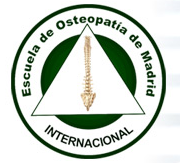by Dr. med. Ryke Geerd Hamer
Cancers of the intestine belong, as far as their germ layer relation is concerned, to the endoderm or inner germ layer. The corresponding control center is in the brainstem, which is why the tumors (adeno-cell type) grow during the conflict active phase.
Cancers of the Colon, Rectum, and Sigmoid (endoderm)
Brainstem-controlled adeno-carcinomas develop in the alimentary canal when we cannot ingest, swallow, digest, or eliminate a ‘MORSEL’. In evolutionary terms these are age-old biological conflicts equally applicable to man and animals. Animals still experience such conflicts in real terms, whereas we humans often suffer them in a transposed, ‘cultured’, or even in a paranoid manner. We may perceive money, shares, or a business as a morsel and suffer a biological conflict when we lose it. In a natural context, bank notes would be considered as completely worthless.
For animals a morsel that cannot be swallowed or digested is a real piece of food. For example, an animal can have an indigestible morsel conflict when a piece of bone was swallowed a little too voraciously and is stuck in the intestine, causing a colic. Together with the colic a Significant Biological Special Program (SBS) is instantly activated with an intestinal cancer (cauliflower-like compact growing tumor) that is growing towards the mouth (“upstream”, as we would call it with a river).
The tumor continues to grow as long as the conflict is active. Simultaneously, mycobacteria (tubercular bacteria) proliferate at the same rate in the blood, provided that the individual has at least one single bacterium of this type available – in Nature, the presence of TB bacteria is taken for granted. During the conflictive active phase, there are only as many bacteria produced as are later needed for decomposition of the tumor, during the healing phase.
The biological purpose of the tumor is to ensure that enough digestive juices are produced to make the morsel smaller, so it can pass through (like an ice cube put into warm water). As soon as the morsel has passed, the conflictolysis (CL= conflict resolution) sets in. The tumor, that no longer has any purpose, is now broken down (caseated) through tuberculosis - with the help of mycobacteria and fungi - and eventually disappears. The special biological program is herewith completed.
One could ask, what is “malignant” about all this? The answer is: nothing at all! Because everything Mother Nature does is benign. It is only we humans, who have been "malignantly ignorant".
We have always imagined microbes to be like a huge hostile Armada that must be combated by the immune system. That was incorrect because microbes were never our enemies, but have unfailingly been our friends and helpers, whom, in our stupidity, we have almost exterminated.
Of course, for us humans, such an indigestible morsel is no longer a food morsel but might be a car, a house, an inheritance, a failed business, a lost court case, a work place, or something like that. But we nonetheless react in the same biological archaic manner as if it were a food morsel that causes our "indigestible conflict".
In the case of colon cancer this biological conflict is either an
• ugly, indigestible anger (colon) or
• ugly, insidious, dirty “shit conflict” (rectum) or
• ugly, mean “shit conflict” (sigmoid colon)
The patient therefore has to learn to translate the conflict into a biological language. In order to comprehend such age-old biological conflicts one has to understand them in evolutionary terms in conjunction with the organ manifestation.
Palate Carcinoma
For example, a man thinks he has won the lottery and he has already invited all his friends and relatives, when it turns out that the lottery ticket was invalid. That is to say, the person has already “snatched the lottery prize-morsel”, but at the end he has to yield it up. A dog would certainly not in the least be interested in a lottery prize - he would sniff the bills and think "that's worthless". But for a human being, who could buy all sorts of things with it, this is a valuable ‘morsel’ and the person, who has suffered this “can’t catch the morsel”-conflict, would develop a palate carcinoma (whereas the dog would only get such a tumor as a result of a real food morsel that was taken away from him).
Another example would be that a patient suffers an indigestible conflict because he has just “swallowed a morsel” but cannot “digest” it. For instance, he just bought a house but suddenly discovers that the contract of purchase is invalid, that he has been cheated, and that he has now lost the house.
A patient must therefore learn to identify the DHS - its exact point in time, and, of course, the corresponding conflict content. Then he shall see – joyfully amazed - that there is a clear system in place. He need no longer panic, because not only can he now understand the underlying cause of the symptoms but also the entire course of events.
It is sheer insanity and medieval dogmatism to think that migrating cancer cells, on their never-yet¬observed migration through the blood, could mutate into another cell type. As an example, a colon cancer cell (endoderm and brainstem-controlled that had formed a cauliflower-like tumor in the colon is imagined to suddenly travel into the bones (mesodermal and cerebral medulla-controlled) causing bone loss. Such a supposition is nothing but a hypothetical fairy tale.
What physicians call “metastases” are in fact new cancers, emanating from new conflict shocks - primarily from iatrogenic (doctor-caused) diagnosis and prognosis shocks. No researcher has ever been able to find a cancer cell in the arterial blood of a cancer patient. If true, that's exactly where they would normally be found - swimming in the peripheral blood stream of the body.
Peritoneal Carcinoma (mesoderm)
The moment a patient is told that he has an intestinal cancer that needs to be operated on, he usually suffers two new conflicts:
1. an attack against the abdomen that is about to be cut into (such a biological conflict causes a peritoneal mesothelioma)
2. invariably a liver carcinoma, always right dorsal.
The latter expresses the biological fear that, because of the tumor, food can no longer pass through the intestines, i.e. the patient suffers the archaic fear of literally starving to death. This image can also trigger the panic of getting an ileus (mechanical intestinal obstruction).
If some time passes between the diagnosis and the actual operation, then the surgeon usually finds rod-like "metastases" on the peritoneum; if he also did an MRI of the liver either before or after the operation, he will also find the aforementioned solitary liver nodules, dorsally right. Unfortunately, there are many examples that such a patient is then pronounced as an “incurable and hopeless case”.
Whereas formerly, the metastasis theory was the standard medical doctrine, we can now systematically, logically and biologically reconstruct the processes. We realize that the patient got the new cancers as a result of iatrogenically-triggered conflicts suffered through an unexpected diagnosis and the announcement of the need for an operation. Out of ignorance of the real causes, surgeons often extirpate the liver nodules and remove as much as possible of the "peritoneal metastases". After the operation, the patient fancies that he is now "free from his affliction" and, as a sign of conflict resolution of his abdominal attack conflict, develops now an ascites (effusion in the abdominal cavity) as a sign of healing. These days, surgeons and oncologists interpret this as the beginning of the end, however, because neither one of them has an understanding of the biological causal relations. From this point on the patient finds himself in a vicious circle as everything that “happens” in regard to his colon will trigger a relapse of the liver carcinoma.
The fact that a second or third carcinoma is present is not contested here – only the interpretation of it is, because it is patently incorrect.
And, now we have arrived at the question of the original biological meaning of such tumors.
These cancers (or tumors) are not at all pointless. Indeed, they have a very special purpose. When the ‘morsel’ is already ‘stuck’ in the intestinal canal – that is to say, the morsel has already been swallowed but could not be digested because of being too large - a growth (or tumor) is forming. Such a tumor consists of "disposable" intestinal cells (to be used only once), whose purpose it is to produce a lot of digestive juices in order to render the ‘morsel’ digestible so that it can pass better.
Based on the knowledge of German New Medicine, we need to reflect on what we must do in cases where an intestinal obstruction threatens to block the colon. In that case a preventive operation should most certainly be performed. We need do nothing else, given that at the moment of the conflict resolution the Significant Biological Special Program (SBS) switches naturally into the healing phase.
During the healing phase, mycobacteria are activated to caseate the tumor (provided that the patient had some available at the moment of the DHS because afterwards they will be of no use whatsoever). The decomposition process is often accompanied with occasional bleeding. After three or four months, there will be only scar tissue where once there was a tumor. This makes Nature the best surgeon in the world. If the patient doesn’t carry any mycobacteria, however, then one might indeed consider the surgical removal of the tumor. This only makes sense, when the related conflict has definitely been resolved.
Cancer of the Small Intestines
Cancers of the small intestine – both in the upper small intestine (jejunum) and the lower small intestine (ileum) - are controlled from the brainstem. The conflict is either an “inability to digest a morsel" or it is an “indigestible anger” conflict, with the additional aspect of starvation. The healing phase of ileum cancer, during which mucous membrane and blood are expelled with the stool, is also known as Crohn’s Disease or Morbus Crohn.
Colitis Ulcerosa
If one is suffering from colitis ulcerosa one is already in the healing phase of an extensively growing intestinal carcinoma of the resorptive type. (“Colitis ulcerosa” is actually an incorrect term for recurring tubercular healing periods of frequently recurring conflicts). The conflict always relates to an “ugly” issue that cannot be absorbed or assimilated, reflecting the function of the intestine to absorb nutrients into the blood and lymph circulation.
Any time a patient re-experiences a conflict relapse, it is thought by doctors to be a ‘remission’, and the subsequent healing phase is called a ‘disease’, namely colitis ulcerosa. The clinical symptoms of this healing phase are: diarrhea, mucosal skin particles and blood in the stool, night sweats - but good appetite. The therapy is: an understanding of the original conflict, so that relapses can be avoided.
Rectal Abscess
A special case is that of a rectal abscess where we see a compact tumor growing under the overlying rectal squamous epithelium mucus membrane. This is palpable but not visible. When the tumor underneath the rectal mucosa is removed through caseation, then we are dealing with a sub¬mucosal abscess. A number of such abscesses are routinely considered as "hemorrhoids" and designated as para-anal abscesses.
Rectal Cancer (ectoderm)
The rectal cancer that belongs to the outer germ layer (cerebrum) forms ulcers rather than tumors during the conflict active phase. During that time, the ulcers never bleed, nor do they cause spasms or pain. After the conflict resolution, the ulcers are replenished under swelling. Typically, they will now form thick hemorrhoids accompanied by bleeding, hyperesthesia (extreme sensitivity), and pain. With the “Syndrome” (water retention) these symptoms are particularly severe. The pain is caused by the muscle spasm!
While with brainstem conflicts the handedness of the patient is insignificant, it is of the utmost importance when dealing with cerebral and cerebellar conflicts. Just as important is here the actual hormone status, i.e., menopause, birth control pill, etc.
We can determine with a simple clapping test, whether someone is right-handed or left-handed: The right-hander will have the right hand on top when applauding; with left-hander it is the reverse. Furthermore, with left-handers the conflict is transferred to the opposite brain hemisphere (i.e. instead of a rectal ulcer, we find a stomach ulcer or bile duct ulcer).
Many cancers are only detected when they are already in the healing phase because it is during that period that they cause the most discomfort. This includes intestinal cancers that are most often found when they start to bleed. Again, doctors consider these healing symptoms as cancer symptoms.
Until now, we have not had any real understanding of what causes cancer because we were neither aware of the underlying causal relation, nor, most importantly, of the evolutionary origin of our biological conflict programs. That is why, in our ignorance, we have always maintained, that cancer is a ‘malignant, wild, haphazard, and uncontrolled process.
This is completely wrong! According to the “Quintessence” of the Fifth Biological Natural Law, such occurrences of cancer are and always have been Significant Biological Special Programs (SBS) of Nature.
© Dr. med. Mag. theol. Ryke Geerd Hamer
Translated from the German original by Caroline Markolin, Ph.D.










 Master PCMH Criteria with Upcoming Webinars
Master PCMH Criteria with Upcoming Webinars







 The American Osteopathic Association (AOA) is the representative organization for the over 70,000 osteopathic physicians (DOs) and 18,000 osteopathic medical students in the United States. The organization promotes public health, encourages scientific research, serves as the primary certifying body...
The American Osteopathic Association (AOA) is the representative organization for the over 70,000 osteopathic physicians (DOs) and 18,000 osteopathic medical students in the United States. The organization promotes public health, encourages scientific research, serves as the primary certifying body...










 9:47
9:47
 Daniel Enriquez de Guevara
Daniel Enriquez de Guevara













.jpg)


















0 comentarios:
Publicar un comentario